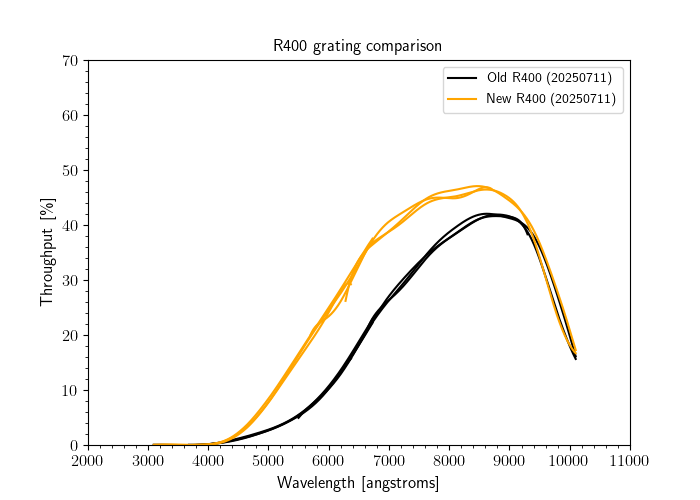Throughput of the new GMOS-N R400 grating
Throughput measurements in preparation for the switchover to the new GMOS-N R400 grating on August 1st, 2025 (HST) confirm an improved throughput of the new grating compared to the current GMOS-N R400 grating.
